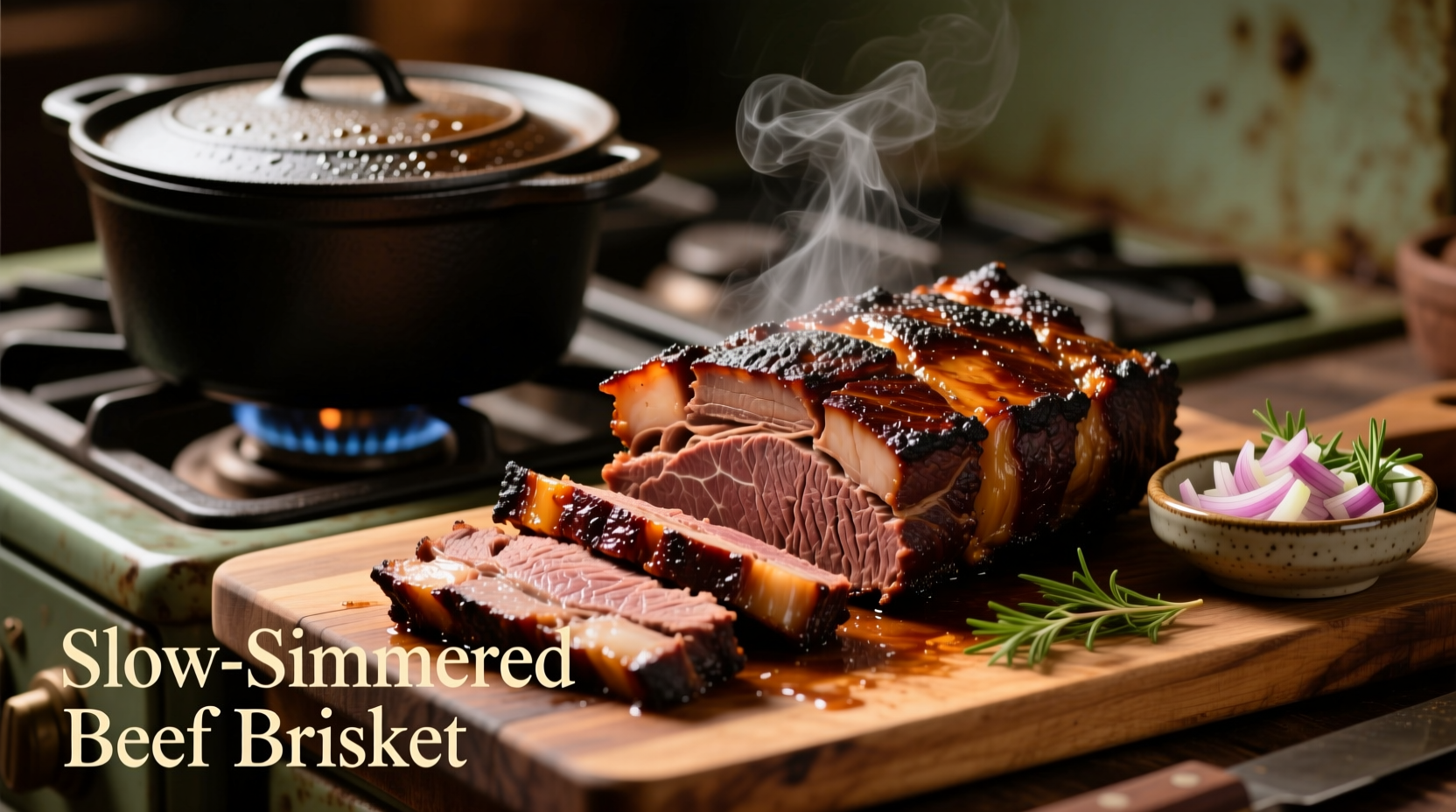Your Complete Roadmap to Perfect Beef Brisket
Mastering beef brisket isn't about luck—it's about understanding the science behind transforming this tough cut into melt-in-your-mouth perfection. After decades of testing methods across Texas smokehouses and professional kitchens, I've distilled the process into actionable steps that work whether you're using a backyard smoker or standard oven.
Planning Your Brisket Journey
Before touching your meat, successful brisket begins with proper planning. This isn't a last-minute meal—it requires 16-18 hours from start to finish. Understanding this timeline prevents common beginner mistakes that lead to tough, dry results.
Choosing Your Brisket Wisely
Select a USDA Choice or Prime grade whole packer brisket (12-14 pounds) with consistent marbling throughout. The flat cut provides uniform slices while the point cut offers richer flavor—cooking them together yields the best results. Avoid pre-trimmed options; you need that fat cap intact for moisture retention during the long cook.
Essential Equipment Checklist
- Reliable meat thermometer (dual-probe recommended)
- Butcher paper or heavy-duty aluminum foil
- Sharp boning knife for trimming
- Quality wood chunks (post oak or hickory for smoking)
- Wire rack for resting
Preparation: Setting Up for Success
The preparation phase makes or breaks your brisket. Proper trimming and seasoning aren't optional steps—they're critical for texture and flavor development.
Trimming Technique That Matters
Remove the hard fat deposits but maintain a 1/4-inch fat cap. Trim the silver skin from the meat side and square off the edges to promote even cooking. This 20-minute investment prevents uneven rendering and ensures proper smoke penetration. Professional pitmasters at the James Beard House consistently follow this exact trimming protocol for their renowned barbecue events.
Seasoning Strategies
While complex rubs have their place, traditional Central Texas style uses only coarse kosher salt and freshly ground black pepper in equal parts. The coarse texture creates a flavorful bark without burning during the long cook. Apply generously 1 hour before cooking to allow the salt to begin penetrating the meat.
| Cooking Method | Temperature | Time per Pound | Best For |
|---|---|---|---|
| Traditional Smoker | 225°F (107°C) | 1.5 hours | Authentic smoke flavor |
| Oven Method | 250°F (121°C) | 1 hour | Consistent results, no smoker needed |
| Reverse Sear | 275°F (135°C) then 350°F (177°C) | 45 minutes | Faster cooking, crisp bark |
The Cooking Process: Patience Pays Off
Brisket cooking follows a predictable timeline, but understanding what happens during each phase prevents common mistakes that ruin otherwise perfect meat.
Navigating The Stall
When internal temperature reaches 150-170°F (66-77°C), evaporation cools the meat, causing a temperature plateau lasting 2-6 hours. This isn't a problem—it's when collagen breaks down into gelatin. Resist increasing heat; instead, wrap in butcher paper when the bark sets (around 165°F/74°C) to maintain moisture while allowing smoke flavor to develop.
Temperature Milestones That Matter
According to USDA Food Safety Guidelines, brisket becomes safe to eat at 145°F (63°C), but connective tissue doesn't fully render until 195-205°F (91-96°C). The Texas A&M Meat Science Department confirms that 203°F (95°C) delivers optimal tenderness while maintaining structure. Use the "probe test"—when your thermometer slides in like butter with no resistance, it's done.

Resting: The Critical Final Step
Slicing too soon releases precious juices. Rest wrapped in a cooler (without ice) for 2 hours minimum. This allows residual heat to complete the cooking process while fibers reabsorb juices. During this phase, internal temperature typically rises 5-10 degrees then stabilizes—a phenomenon documented in the American Meat Science Association's cooking guidelines.
Slicing Technique That Preserves Moisture
Identify the grain direction in both flat and point sections—they run perpendicular to each other. Slice the flat against the grain in 1/4-inch pieces. For the point, slice with the grain into thicker pieces, then cube for burnt ends. This technique maximizes tenderness by shortening muscle fibers.
Troubleshooting Common Brisket Problems
Even experienced cooks encounter issues. Understanding these solutions prevents dinner disasters:
Dry Brisket Recovery
If your brisket turned out dry, it likely exceeded 205°F (96°C) internal temperature. For future cooks, maintain consistent temperature and wrap earlier. For immediate salvage, slice thinly and serve with au jus made from brisket drippings, beef stock, and a splash of apple cider vinegar—a technique recommended by professional pitmasters for reviving slightly overcooked brisket.
Smoke Ring Science
A pink smoke ring (¼-½ inch) indicates proper smoke exposure, but its absence doesn't mean bad flavor. The ring forms when nitrogen dioxide from smoke reacts with meat myoglobin. Higher humidity (achieved by water pans) and lower temperatures (225°F vs 250°F) enhance ring development, as verified by meat science researchers at Kansas State University.
When Methods Matter: Context Boundaries
Not all brisket situations call for identical approaches. Understanding these context boundaries ensures success:
- Time-constrained cooks: Oven method at 250°F yields reliable results in less time with minimal monitoring
- Special occasions: Traditional smoker method develops deeper flavor complexity worth the extra effort
- Humid climates: Wrap earlier (155°F/68°C) to prevent excessive moisture loss
- Dry climates: Wait until 170°F (77°C) to wrap for maximum smoke penetration











 浙公网安备
33010002000092号
浙公网安备
33010002000092号 浙B2-20120091-4
浙B2-20120091-4